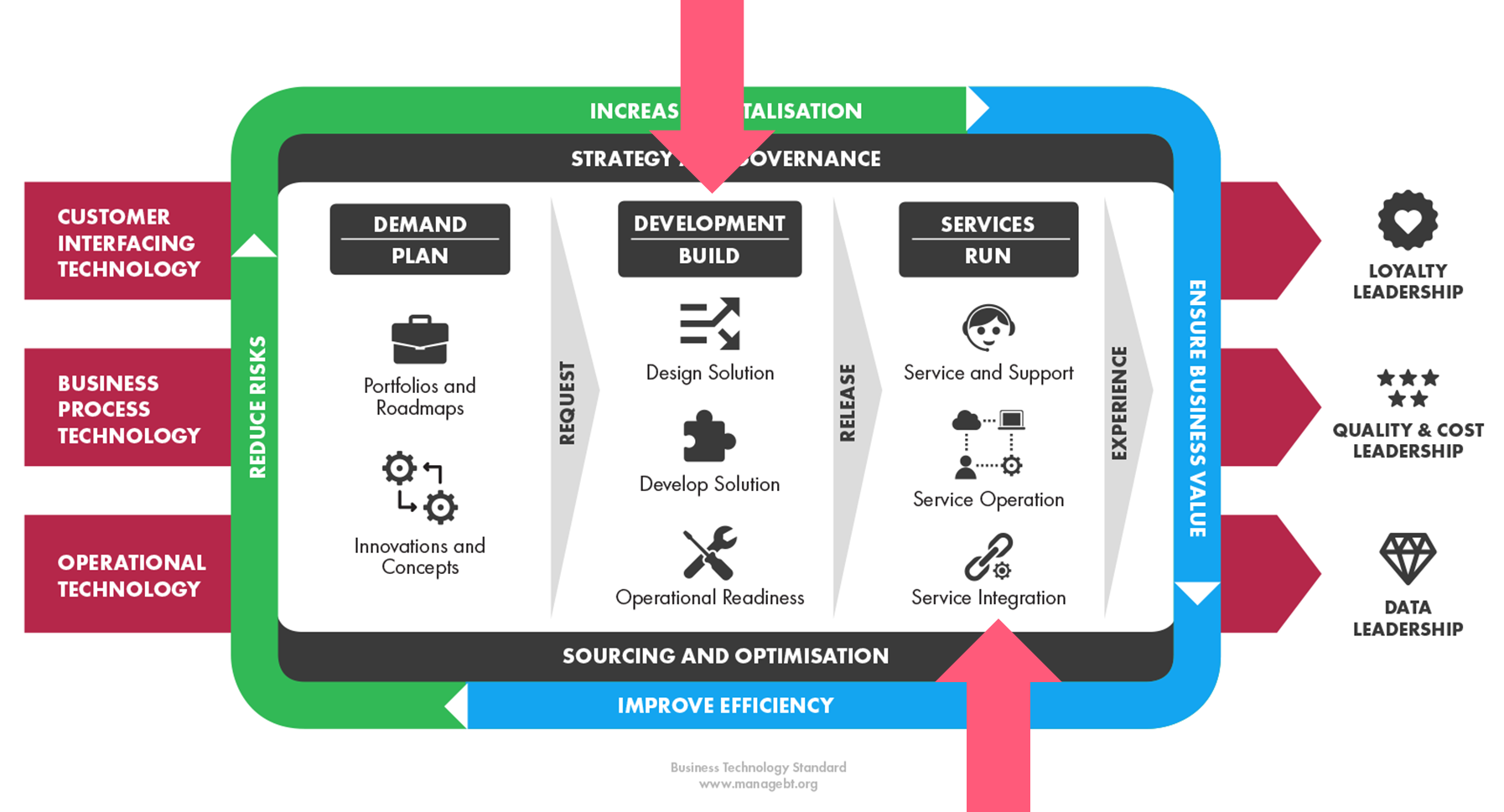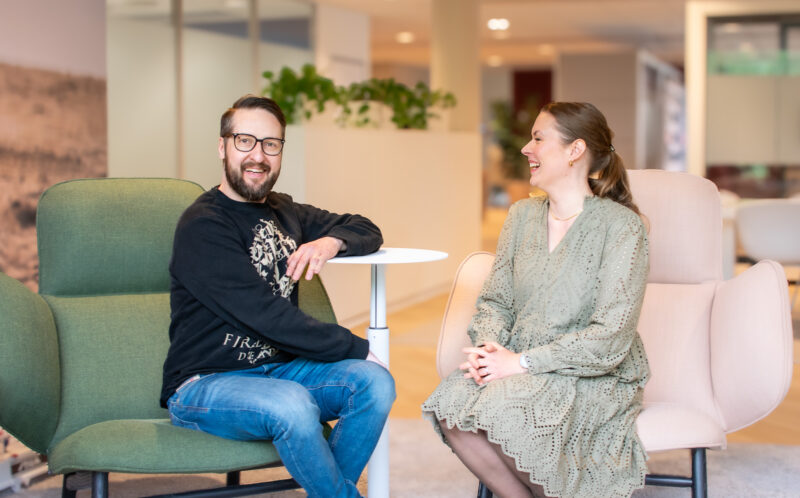Agile but stable – How to get agile development and SIAM working side by side?
Agile development and service integration – freedom and standards. Can these two ever make a match? Timo Ahonen, CTO Service Integration at Sofigate, busts some myths and shows how to achieve a winning combination.
Agile methods in digital service development have been gaining more and more popularity every year. The basic principle is to run short and recurring development sprints to achieve efficiency and flexibility.
While agile has become almost a standard in development work, Service Integration and Management (SIAM) has been proved to be a successful method in managing services in a multi-vendor environment. The key here is to apply common practices to ensure a stable and well-functioning operational environment.

Development and Service Integration depicted in Business Technology Standard operating model.
On the surface level, these two methods would seem to conflict with each other. On one hand, agile methods enable product development teams to act very independently, while on the other hand SIAM places rules that could be interpreted as limiting this independence. Even though these two cultures may seem different, their guiding principles are in many ways alike.
Both agile methods and SIAM highlight the importance of cooperation and communication. Other common features are continuous improvement and the use of automation. To make agile product development and well-managed SIAM work in tandem, it makes sense to take advantage of this common ground.
Interaction leads to success
Fluid interaction between the teams responsible for product development and service management is essential to successful cooperation. Both teams have to understand where the other is coming from and strive for seamless interaction. This can be achieved by organizing joint events, or facilitating end-to-end simulations to demonstrate how the entire operation functions. When teams are learning together, everyday cooperation becomes easier.
Close cooperation helps the people working with service integration understand the value that agile development brings to the business. And on their part, development teams can begin to better appreciate the role service integration plays in ensuring business continuity and high-quality user experience. This way, it is also easier to ensure that teams don’t have goals that would be at odds with each other.
Continuous improvement helps adapt to changes
Successful cooperation is all about continuously improving daily work together. A desire for continuous improvement also helps the organisation adapt to changes in its environment. Continuous improvement can be used for rationalising one-sided rules or finding common methods.
For instance, the change and release management practices could be jointly optimised by removing obstacles of speed without compromising quality. Feedback from service management can also be added to the development backlog to improve service quality.
Automation improves efficiency
Automation is also something the teams can develop together to minimise routine tasks and improve efficiency, for example by improving integration between service management and development tools. Integration ensures that both tools contain the same unified data.
Via tool integration an incident caused by an application error can show up as defect in the development backlog. Or development releases can show up as changes in the production environment. Thus, both teams can use their own tools while the data stays intact and automatically applied to the right context.
First steps in the same direction
The first step in getting development and service integration to cooperate closely is to strike up a dialogue. Can you act as the matchmaker here? When a common ground has been laid, it is easier to go ahead with continuous improvement, and move on to tool integration and automation.
It is also important to handle the development and management of digital services as a single topic in training and coaching sessions. When common goals are set already in the training stage, the barriers to successful cooperation become smaller. This enables your organisation to focus on rapid development results and reliable and stable services right from the start.
The benefits become tangible when both sides operate from a shared understanding of methods and practices. When combined with good leadership, agile development and SIAM are a great match for each other.
About the author
Timo Ahonen is Senior Advisor and CTO for Management and Integration of Services at Sofigate. His core expertise is in managing, developing, and leading IT and digital services in global environments.
Tiina Poutanen (OP Financial Group), Alex Hakala (OP Financial Group), Kimmo Poikela (Valio), Juha Mäkinen (Valmet), Mikko Pulli (Stockmann) and Tomi Pekkola (YIT) contributed to the article by sharing their insights.


